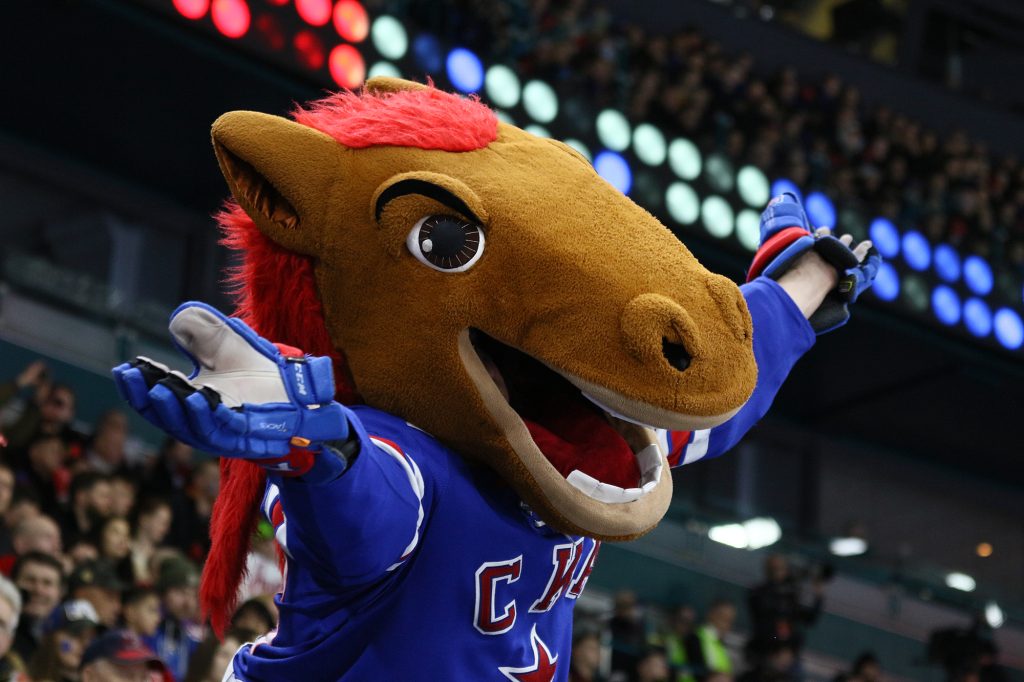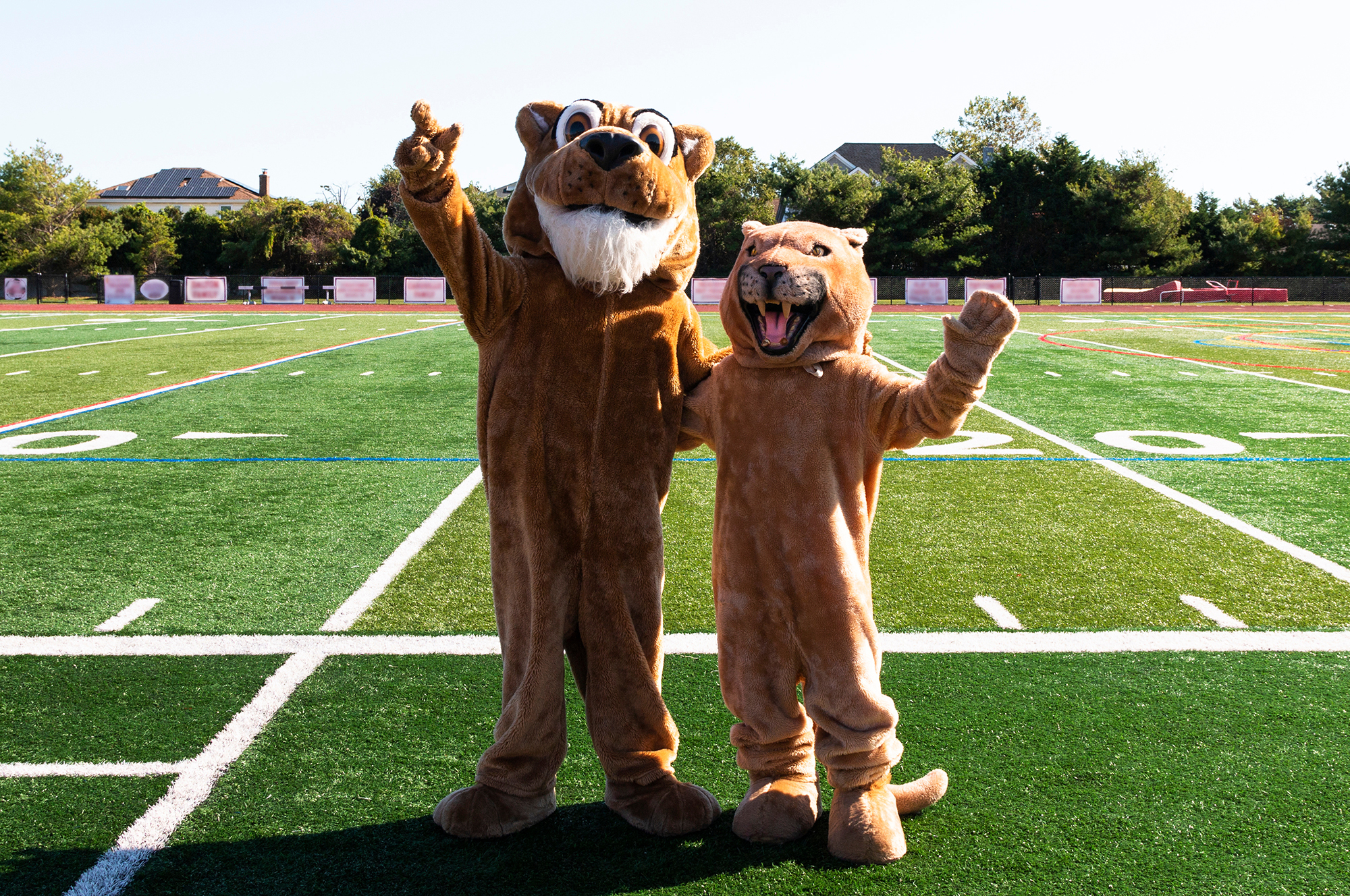According to tradition, the mascot of a sports team is meant to bring it good fortune — like a good-luck charm. A mascot can become the embodiment, not just of a team, but of an entire school community, where athletes, students, employees and fans can all proudly call themselves Eagles, Wildcats, Bulldogs or Knights.
School mascots, however, can also bring conflict and controversy. As the culture of a school community evolves, the mascot of yesteryear may no longer seem suitable today. One person’s point of pride can be someone else’s source for embarrassment or discomfort — especially when a mascot depicts an individual person or culture. Mascots can change, too, when schools open or close their doors, or when districts or sports teams merge.
As school districts consider changing their mascot, logo or school colors, it’s important to remember that these cartoonish figures have the power to evoke very rich and real emotional responses within the school community. Asking what a school’s mascot should be is really a proxy for much deeper questions: Who are we? What do we stand for? What symbol represents us best?
Read more: A brand is not a logo
Within any school district, different audiences will answer those questions in different ways. To navigate the process of picking a new identity for their school, leaders are wise to seek out those different opinions, and develop a process where voices can be heard and decisions can be made with transparency, equity and efficiency.

Small steps toward big change
Schoharie CSD
Like many colleges, universities and school districts across the United States, Schoharie Central School District has had “Indians” as its mascot for many years. And like other institutions, the district has closely watched local and national conversations over the past several years about the use of Native American imagery as a mascot. As far back as 2001, the state Education Commissioner had requested that school districts discontinue the use of Native American mascots “as soon as practical.”
After learning of the state’s order against another school district to remove any digital footprint that included Native American imagery, Schoharie CSD opted to do the same — but remained the Schoharie Indians officially. A simple “S” logo replaced the district’s headdress-wearing Plains Indian on the district website and its social media.
That move caused district residents to flock to social media and board meetings, with some expressing disapproval, and others voicing support. When the state Education Department took the additional step of setting a deadline for the removal of all Native American imagery, the district knew that these conversations would have to continue.
“It’s important to be transparent with the school community and let the Board of Education lead the charge on the direction the district goes as things move forward.”
Schoharie CSD Superintendent Dave Blanchard
“I think the key issue is to listen to the stakeholders in the community as the district looks to change the mascot,” Superintendent David Blanchard said. “I think the main thing to watch out for is not listening or not being attentive to the needs of the educational community as the change is being made.”
Blanchard acknowledged the deep, multi-generational emotional connection the school community has with its mascot and logo. Schoharie is a tight-knit rural community, where today’s students walk the same hallways as their grandparents and even great-grandparents.
“It’s important to be transparent with the school community and let the Board of Education lead the charge on the direction the district goes as things move forward,” Blanchard said.
To that end, the district is now in the process of getting feedback from community stakeholders to detail the path forward in light of the state Education Department’s more recent edict. Recently, the board approved a process to replace the mascot that includes submissions from the school community and a public vote.
And even as conversations around the new mascot continue, the district is looking ahead. While the district’s logo continues to be seen in the gym, on furniture and even in masonry on its campus, a recent capital improvement project approved by voters will move forward without any Indian imagery.
Key takeaways from Schoharie
Scan the horizon: District leaders were proactive in preparing for this issue when they saw it playing out in other communities.
Go slow and start small: Changes to your brand identity take time to implement. Schoharie found small ways to shift away from the problematic Indian imagery without completely discarding the “Indians” identity.
Putting the students first
Boquet Valley CSD
When voters of the Elizabethtown-Lewis and Westport central school districts approved a merger in 2018, they knew it would mean starting from scratch for the new centralized district — its name, its school colors, and its mascot.
Choosing a new identity for the new school was a lengthy and complex process. To make it go smoothly, Bouquet Valley CSD Superintendent Joshua Meyer combined community engagement with leadership at the district level to build consent around the elements that would come to identify the new merged district.
The process started by convening a committee, whose job it was to review suggestions from the entire school community. “We took everything,” Meyer said. “Any idea anyone had, it went to the committee.”
From there, the committee worked back and forth with the board to narrow the numerous suggestions received down to a more manageable list. The two bodies took turns, with each exercising veto power, until what had started out as a list of numerous ideas was winnowed down to just three. Those three concepts went out to not just one, but two votes: one among the students, and another in the community.
Read more about soliciting community input with this ThoughtExchange case study: Union Public Schools Leverages Community Input to Change 75-Year-Old Mascot with ThoughtExchange
Meyer got lucky, because the two votes went in the same direction. But what if it had been a split decision? Easy choice, according to Meyer.
“I would go with the students,” the superintendent said. “At the end of the day, it’s something that represents them.”
Boquet Valley are now the Griffins, and Meyer has a word of advice for anyone dreaming up ideas for their next mascot: “Choose something that’s not a person. If you don’t want to be doing this again in 10 or 20 years’ time, pick an animal of some kind. It’s just so much less risky that way.”
Even with broad consensus around the new mascot and school colors, Meyer and his team still had a lot of work ahead of them to put the new brand identity into practice, and their approach was strategic.
“You’re not going to make everybody happy with whatever you choose, but you do have to move forward.”
Boquet Valley CSD Superintendent Joshua Meyer
For high-profile areas like the varsity gym floor, Boquet Valley invested money up front into having the logos, colors and school names updated. Lower-profile spaces waited until the time came to refinish or replace the floors or paint the walls. In other spaces, banners and posters were hung to cover old logos or names until those spaces were due to be renovated. And, Meyer said, there are probably still instances of old names or logos sprinkled throughout the school buildings even now.
“It’s a team effort,” Meyer explained. “We needed to bring everyone together and say, ‘This is here to stay.’ You’re not going to make everybody happy with whatever you choose, but you do have to move forward.”
But, Meyer added, a little bit of luck can go a long way to changing people’s minds.
“If one of your teams has an amazing season wearing their new team colors, promote that,” he said. “Take the wins where you can get them.”
Key takeaways from Boquet Valley
Define your process: Bouquet Valley found a way to draw in a large number of ideas from the community, entrust a few key stakeholders with narrowing the field, and turn the final decision back over to the public. Striking the right balance — and being transparent about it — can help foster consent around the decisions that are ultimately made.
Invest wisely: Replacing every instance of the district’s logo, school colors and mascot can’t happen overnight. A strategic approach can ensure that the most prominent, important or high-profile areas get addressed first, leaving other areas to be tackled over time as building upgrades move forward.
Take the W: While no district can engineer a winning sports season, we can always find opportunities to cheer for our students. Use these “wins” to highlight the district’s new identity in a positive light, and start to build those positive associations within your community.
